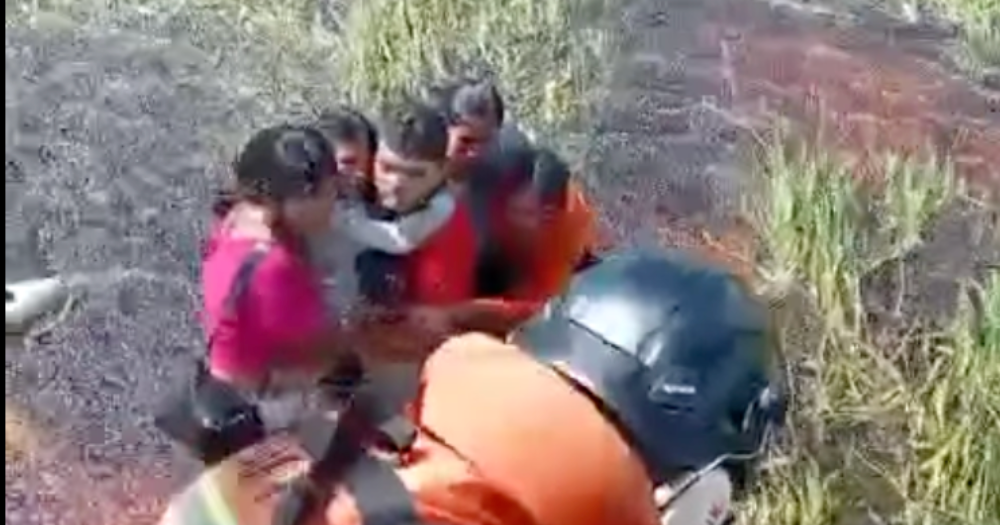In a dramatic rescue operation, five individuals survived a harrowing 36 hours stranded atop a capsized plane in an alligator-infested swamp in Bolivia. The incident unfolded after the single-engine aircraft was forced to make an emergency landing while en route to Trinidad from Baures. Officials reported that the individuals, including three women, a child, and a 29-year-old pilot, were found in excellent condition and successfully extracted from the perilous situation.
| Article Subheadings |
|---|
| 1) Overview of the Incident |
| 2) Details of the Emergency Landing |
| 3) The Stranded Group’s Experience |
| 4) The Rescue Operation |
| 5) Reactions and Implications |
Overview of the Incident
The recent episode in Bolivia marks a remarkable tale of survival. A small single-engine plane, which was making its routine journey from Baures to Trinidad, encountered sudden and severe complications that led to its emergency landing in a swampy region. The Bolivia Civil Defense reported that all individuals aboard the flight, comprised of three women, a child, and the pilot, survived the ordeal. This situation not only drew attention to the dangers of flight in remote areas but also highlighted the effectiveness of emergency response protocols aimed at safeguarding lives in critical scenarios.
Details of the Emergency Landing
According to pilot Andres Velarde, the aircraft began experiencing rapid descent, compelling him to search for a place to land. The challenges of navigating through a highly populated alligator habitat complicated the landing procedure. In a critical moment where quick decisions were pivotal, Velarde recognized the only feasible landing option was a swamp. This remote location presented numerous potential dangers, but it was the only alternative under the circumstances. The incident underscores the unpredictable nature of flying in sparsely populated regions where navigational issues can arise unexpectedly.
The Stranded Group’s Experience
Once on the ground, the passengers were faced with an unsettling environment characterized by looming threats. They were surrounded by alligators, and according to Velarde, these predators approached alarmingly close to their position, approximately three meters away. To make matters worse, the group encountered an anaconda in the muddy waters. The group’s situation was exacerbated by a lack of freshwater—compounded by the lurking alligators making any movement perilous. For sustenance, they relied on local cassava flour, which one of the passengers had fortuitously brought along. This survival strategy demonstrates both ingenuity and endurance against overwhelming odds.
The Rescue Operation
Official search teams were deployed after the aircraft was reported missing. The timeline of events took a critical turn when local fishermen spotted the stranded individuals atop the capsized plane. Their discovery marked the beginning of a coordinated rescue effort involving various emergency services, highlighting the importance of community vigilance in crisis situations. The rescued party was subsequently transported by helicopter to a nearby hospital. Officials confirmed that all individuals were in “excellent condition,” a testament to their resilience and the effectiveness of the response teams.
Reactions and Implications
The response to this incident underscores the collaborative efforts of local authorities and emergency services. Ruben Torres, the Director of the Beni Region Health Department, expressed relief and gratitude for the successful rescue. He acknowledged the coordination of numerous agencies to ensure the safety of the individuals involved. This incident serves as a reminder of the unpredictability of aviation, particularly in remote areas like the Bolivian Amazon, and it highlights the necessity for stricter safety protocols and enhanced training for pilots navigating challenging environments.
| No. | Key Points |
|---|---|
| 1 | Five individuals were rescued after surviving 36 hours in an alligator-infested swamp. |
| 2 | The pilot made an emergency landing after the plane began to lose altitude. |
| 3 | The stranded passengers consumed local cassava flour to survive. |
| 4 | Local fishermen played a crucial role in the rescue operation’s success. |
| 5 | The incident raises awareness about aviation safety in remote areas. |
Summary
The successful rescue of five individuals from a precarious situation in a Bolivian swamp signifies not only the importance of emergency response protocols but also illustrates human resilience in the face of danger. The collaboration among various agencies in their efforts to locate and rescue the passengers serves as a model for future incidents. As aviation continues to play a significant role in remote regions, the implications of this event may prompt further reviews of safety measures to ensure that individuals can navigate these landscapes safely.
Frequently Asked Questions
Question: What factors led to the emergency landing of the plane?
The aircraft began to lose altitude rapidly, prompting the pilot to seek an open space for a landing, ultimately leading to the decision to land in a swamp.
Question: How did the stranded group manage to survive without fresh water?
The group consumed local cassava flour, which one of the passengers had carried on the trip, as their primary source of sustenance.
Question: What role did local fishermen play in the rescue operation?
Local fishermen spotted the stranded individuals atop the capsized plane and alerted authorities, leading to their eventual rescue.


